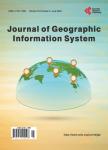Historical Land Use/Cover Changes and the Hemeroby Levels of a Bio-Cultural Landscape: Past, Present and Future
Historical Land Use/Cover Changes and the Hemeroby Levels of a Bio-Cultural Landscape: Past, Present and Future作者机构:Center of Engineering Modeling and Applied Social Sciences Universidade Federal do ABC (UFABC) Santo André Brazil Pos-Graduate Programme in Ecology and Natural Resources Universidade Federal de Sã o Carlos (UFSCar) Sã o Carlos Brazil Department of Geography Universidade de Sã o Paulo (USP) Sã o Paulo Brazil Department of Biological Science Universidade Regional Integrada do Alto Uruguai e das Missõ es (URI) Erechim Brazil
出 版 物:《Journal of Geographic Information System》 (地理信息系统(英文))
年 卷 期:2017年第9卷第5期
页 面:576-590页
学科分类:1002[医学-临床医学] 100214[医学-肿瘤学] 10[医学]
主 题:Land Use Change Trajectories Urbanization Conservation Landscape Sustainable Management
摘 要:The urbanization of a campus landscape has required much space for this expansion, reinforcing the status of geographical space as a limited resource. We analyzed the effects of land cover change assessed over temporal dataset on composition and configuration dynamics of UFSCar (Federal University of São Carlos) campus landscape, based on a descriptive view of the hemeroby levels, over a 54-year period (1962-2016), in order to understand the impacts of past anthropogenic induced landscape change and inform decision making with regard to biodiversity management. The classification of land use/cover dynamics, over time, was obtained based on screen digitizing of aerial photos and LandSat imagery. An ordinal scale ranging from ahemerob to metahemerob was applied to assess the hemerobiotic state of each land use type. Currently, The UFSCar landscape campus configures a biocultural mosaic in different stages of hemeroby. Thus a campus landscape dynamics model, which can be denoted as “forestry-conservation-urban model, anthropogenic landscape is replaced by natural one, later by land cover reflecting the spatial anthropization process. Through time, two hemerobiotic trajectories were identified, in which 1) an euhemerob landscape matrix is substituted by an ahemerob one, resulting in increased naturalness of the campus landscape, and then 2) metahemerob patch types will later on increasing as a consequence of ongoing urbanization. Expressive amount of ahemerob patches in campus landscape fulfills one of the conditions for maintenance of the capacity for self-regulation and sustainability of a biocultural landscape. This framework provides an essential tool supporting with essential information about current and historical landscape sustainability for campus landscape management and support decision making process. The main institutional challenge for campus landscape sustainable management lies in the balance between the competitors of the campus landscape matrix:



